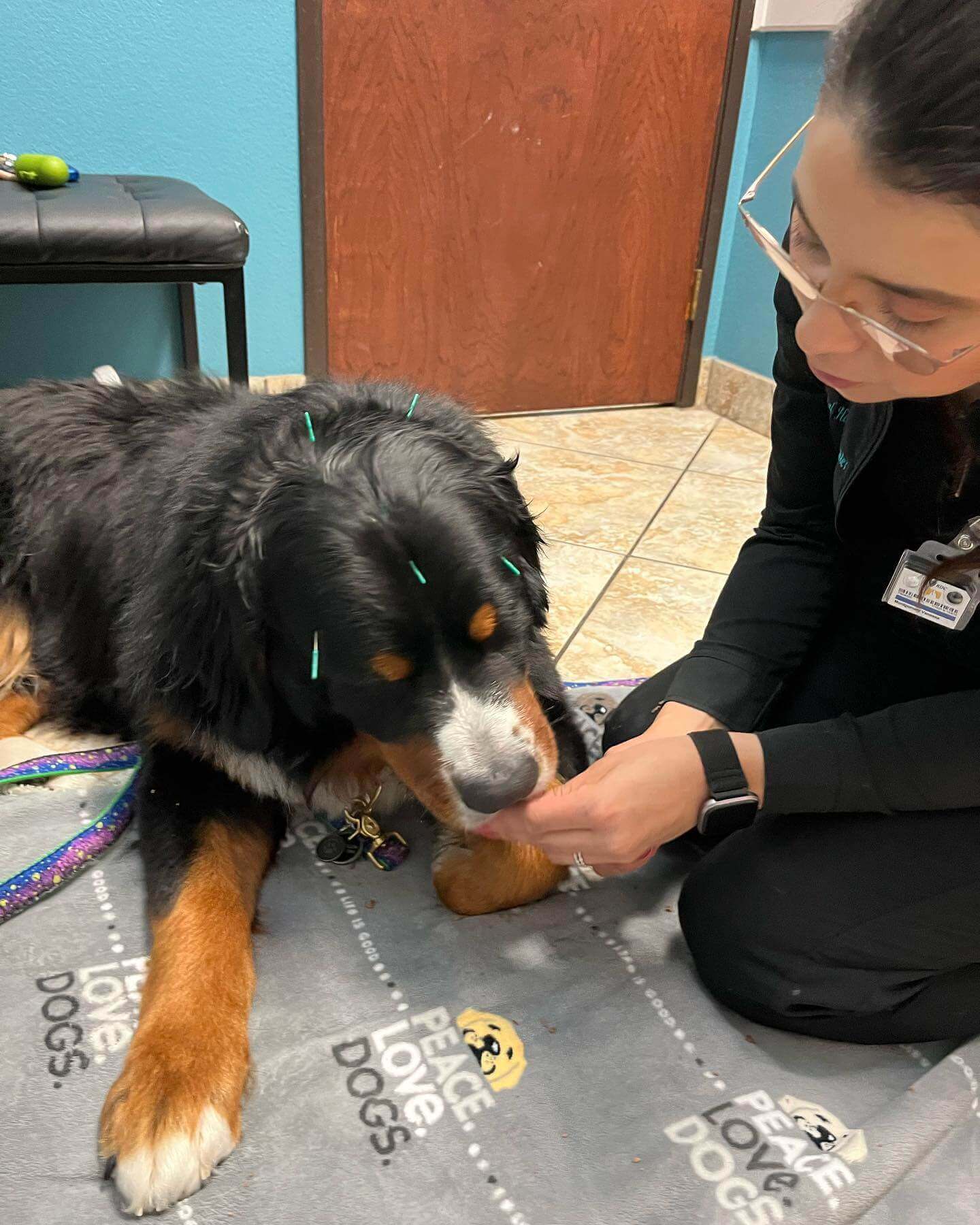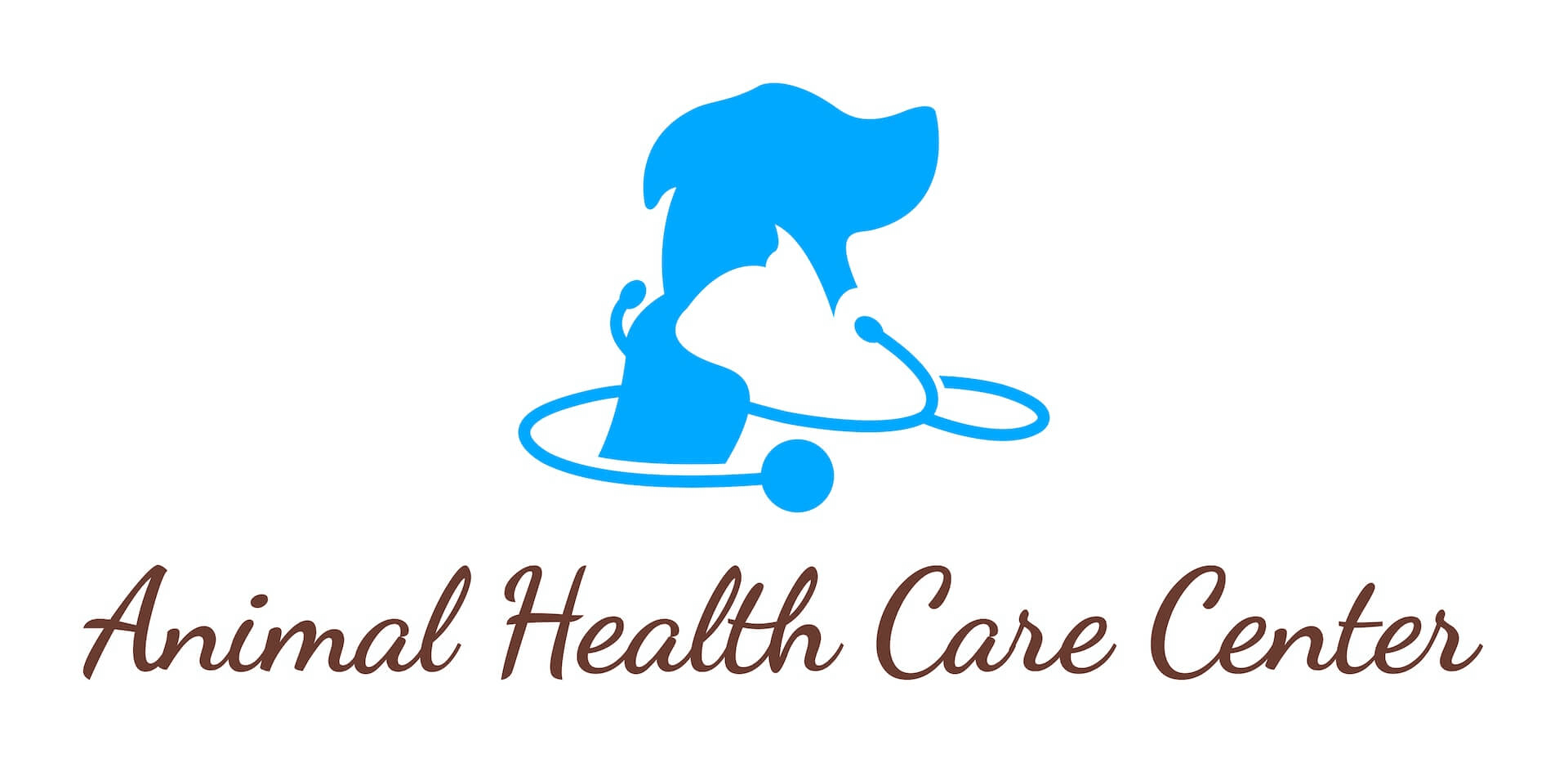 For thousands of years, acupuncture has been used to promote balance in the body’s total energy system and ability to heal. In all animals there are precise locations on or near the surface of the body known as acupuncture points; these points, when stimulated, may produce changes in the body’s internal organs and functions.
For thousands of years, acupuncture has been used to promote balance in the body’s total energy system and ability to heal. In all animals there are precise locations on or near the surface of the body known as acupuncture points; these points, when stimulated, may produce changes in the body’s internal organs and functions.
Traditionally, inserting a fine stainless steel, gold, or sterling silver needle into the point causes a specific desired effect. Other methods of stimulation include the application of heat, electricity, laser light, or injection. Veterinary acupuncture utilizes both the ancient theories of Traditional Chinese Medicine (TCM) and the western observations of physiological response and correlation of effect, in the selection of acupuncture points to treat.
The ancient theories of TCM describe the body as having a network of energy channels, called meridians, which conduct flow of Qi – the body’s sustaining energy force. Qi regulates bodily functions as it flows to and through all parts of the physical body. When Qi flows in a smooth harmonious manner, health is the result. The healthy flow of Qi through the meridian channels may be disrupted by any number of things, such as:
• Advanced age
• Chronic injury
• Sudden trauma
• Environmental factors such as heat, cold, wind or toxin(s)
• Poor or inappropriate nutrition
• Inadequate exercise or overexertion
• Insufficient rest
• Genetic weakness
• Stress
Whenever Qi becomes disrupted imbalances occurs and disease may result. The flow of Qi may be influenced by the stimulation of acupuncture points. Qi may be nourished by proper food, herbs, exercise, and body manipulation. The stimulation of acupuncture points by needles or other means is an attempt to re-establish the proper balance or flow of Qi throughout the body. The use of herbs, nutritional support, and exercise are implemented in an attempt to assist the body in obtaining the appropriate Qi it must acquire from its environment. Acupuncture helps to reset the energy system “circuit board” by balancing the flow of Qi within the body.
The use of acupuncture has been shown to:
Provide generalized oxygenation and increased blood flow to specific areas of treatment. Aid production of endogenous cortisone and other anti-inflammatory secretions. Release the internal production of endorphins, the body’s natural painkillers. Stimulate immunity by increasing white blood cell count and antibody production.
Acupuncture’s influence on the body’s nervous system is such that it may inhibit pain and increase cardiac output, as well as stimulate bone healing, and suppression of the cough reflex. Several theories have been used to explain the effects produced by the treatment of acupuncture, but none of these theories, standing alone, is able to explain the effects observed.
Acupuncture can be the only method of choice, or it may be combined with other treatment modalities such as chiropractic, herbal or nutritional support. Acupuncture may also be combined with more conventional western treatment modalities to enhance the body’s response to the treatment.
Pregnant animals not yet ready for labor are not good candidates for acupuncture. Animals with high fever should not be treated solely with acupuncture, but can be combined with appropriate antibiotic and/or herbal treatment which can accelerate healing and help decrease discomfort. While acupuncture works harmoniously with most other forms of treatment, certain drugs can significantly alter the effects of acupuncture. One should always make sure that the acupuncturist is aware of what drugs the animal is taking when brought in for treatment. Ideally, vaccinations should not be given during the treatment period.
There is a limit to how much acupuncture will help an animal. It may be that the disease or trauma has progressed beyond the point where acupuncture can arrest or reverse the damage, and it can do is provide supportive care and symptomatic relief.
In order to enhance the benefit of the acupuncture treatment, one should avoid:
• Heavy feeding
• Heavy exercise
• Bathing for three hours before and after treatment
The animal should be allowed to receive plenty of rest after a treatment so that its body may achieve the maximum benefit of the treatment. Animals may exhibit reactions to acupuncture treatments for 24-48 hours afterwards: they may exhibit no immediate change or may become very sleepy or hyperactive probably due to sudden changes in the energy flows within their body. None of these outcomes is cause for alarm. One must be sure to continue with the prescribed medications. To help with future treatments, the owner should make note of any change in the animal’s attitude, gait, alertness, appetite, bowel, and urinary movements. All of these signs direct the acupuncturist in the correct direction for future treatments.
There are occasions following an acupuncture treatment when the animal will exhibit an “aggravation” during which time its symptoms seem to worsen for up to 72 hours, followed by gradual improvement. This rebound effect may be seen as a good sign, usually indicating that an energetic reaction is occurring. Usually there is nothing required except to wait until it passes.
There are several other rare complications associated with acupuncture treatments: The breaking of a needle while in the skin or subcutaneous tissue, which may be remedied by nothing more complicated than minor surgery, hematoma formation, which is the pooling of blood from a punctured blood vessel; striking a nerve during the placement of an acupuncture needle; and very rarely, only under deep needle insertion, an organ may be punctured.
Before pursuing treatment with acupuncture, a physical examination complete with a full medical history is performed, occasionally involving laboratory test or x-rays. There are some conditions for which a single acupuncture treatment is all that is required. In most instances, however, there are multiple treatments spread over weeks or even months to reserve some chronic conditions. For more involved treatments, we ask that the client be willing to commit to a minimum of three acupuncture treatments in order to give a chance for the improvement to be seen. The more traditional Chinese approach requires six treatments before there may be any improvement. Typically, that acupuncture treatments are spread weekly, but occasionally they may be required two times weekly or every two weeks, depending upon the animal’s condition. As the animal responds to the treatments, the length of time that the treatment remains effective is noted, and the treatment intervals may become longer, or possibly treatment is no longer necessary. For maximum effect to be maintained, chronic conditions may require treatment monthly or several times per year, once the initial response level has peaked.
During the acupuncture treatment itself, most animals exhibit little or no pain or discomfort. Most of our patients will lie down during treatment with their owners holding them, and take a nap. A few animals, with a very high anxiety level or extreme fear reactions to being confined in a veterinary office, require more coaxing to be still. It is only in extraordinary circumstances that we chemically restrain the animal. The treatment itself may last ten seconds to thirty minutes, the average treatment being twenty minutes.
